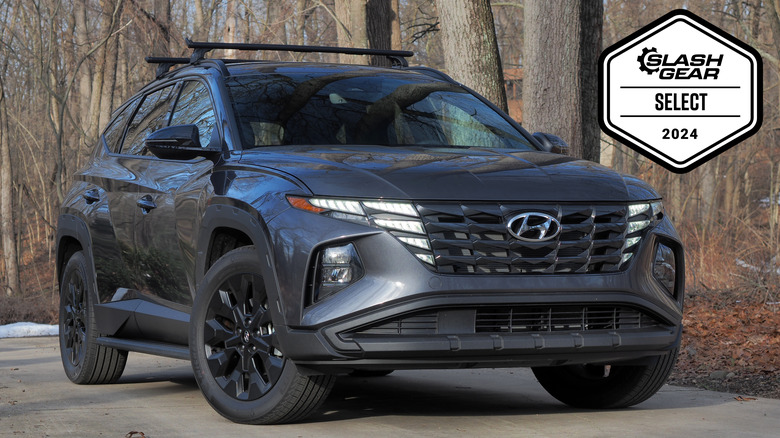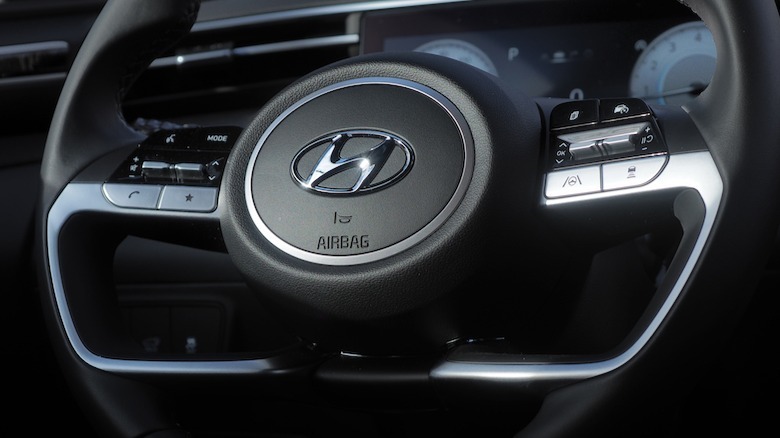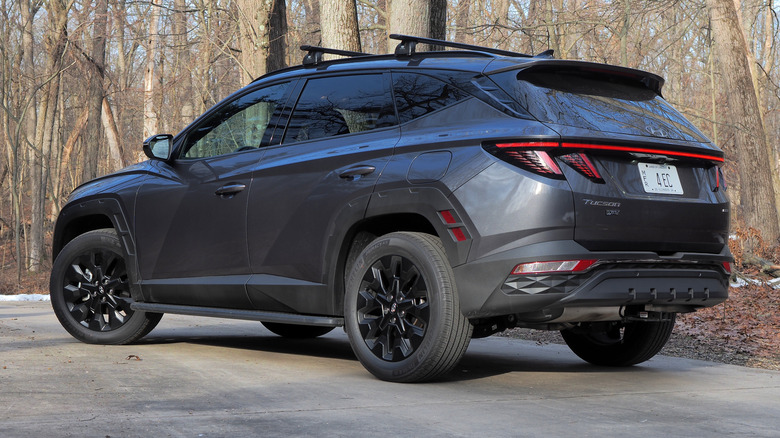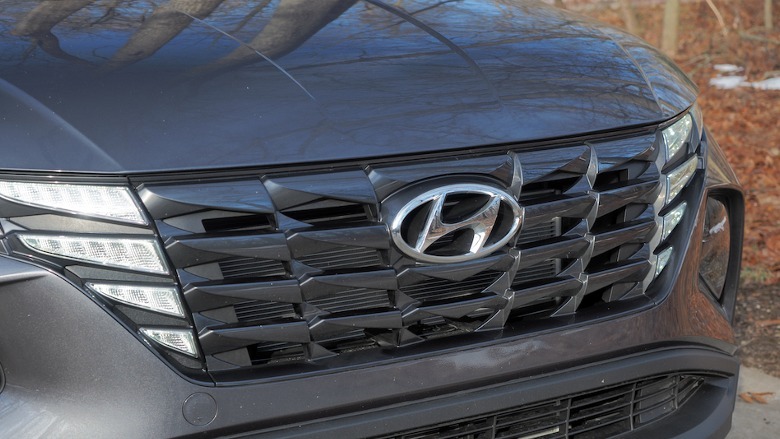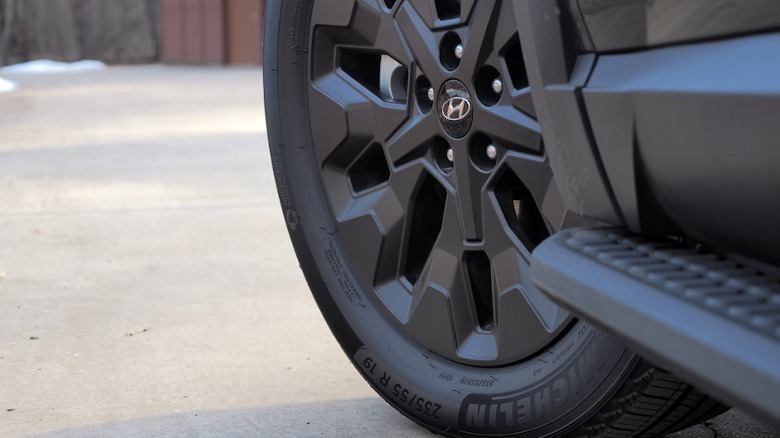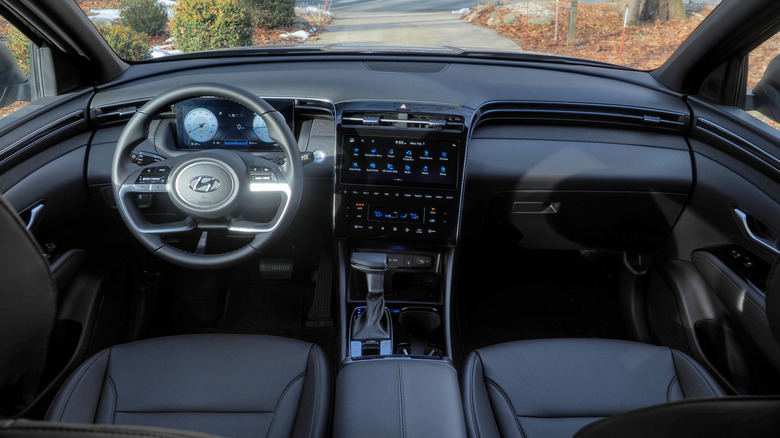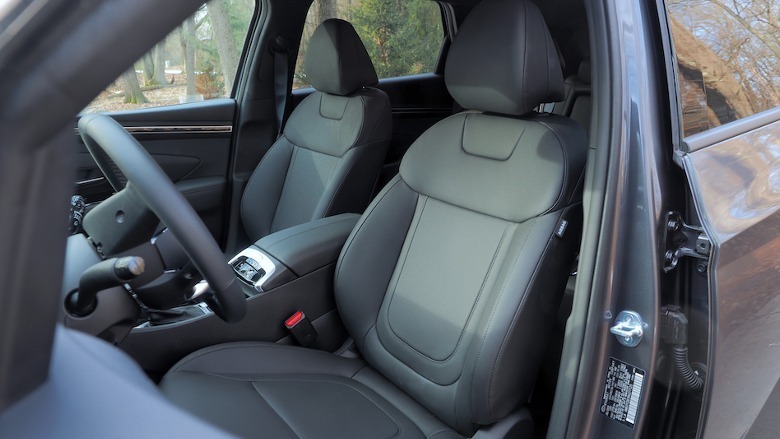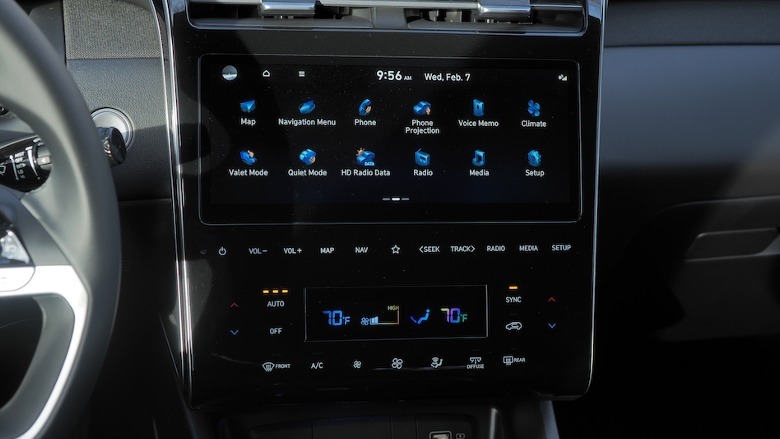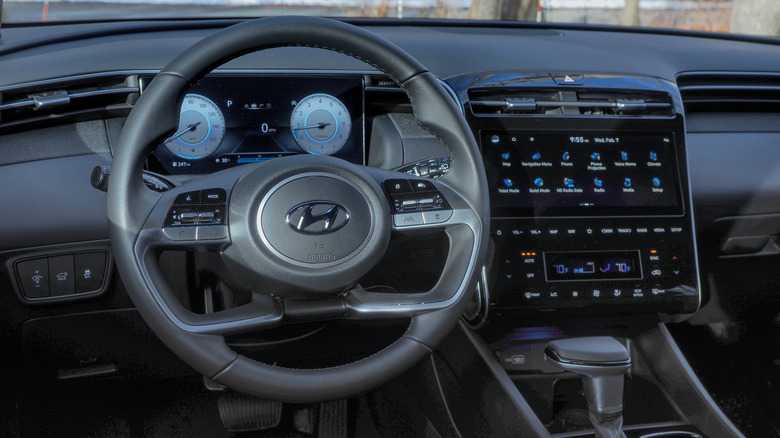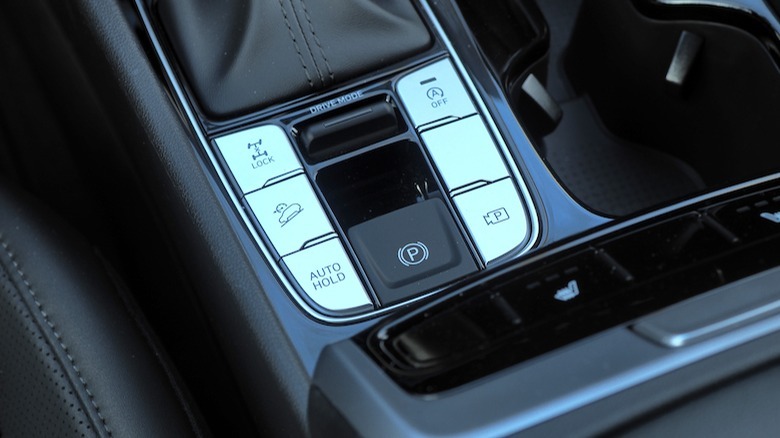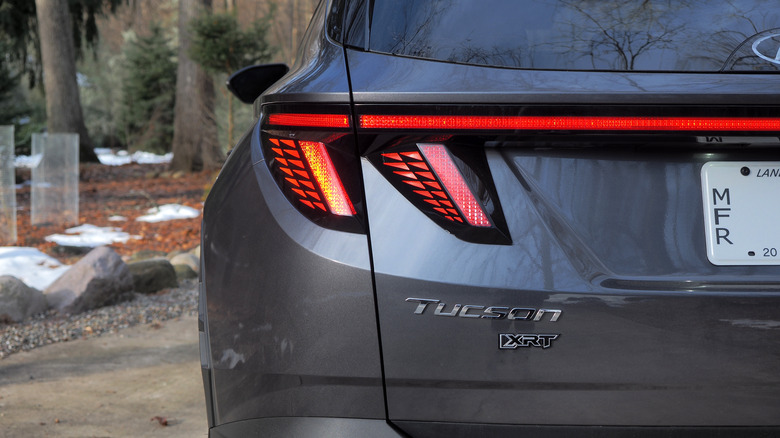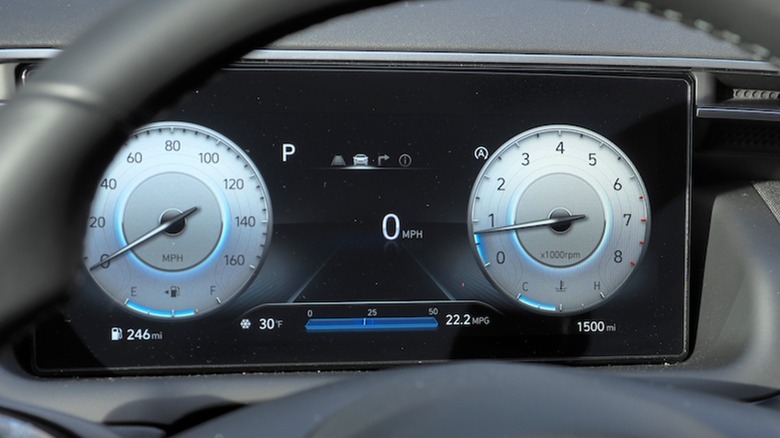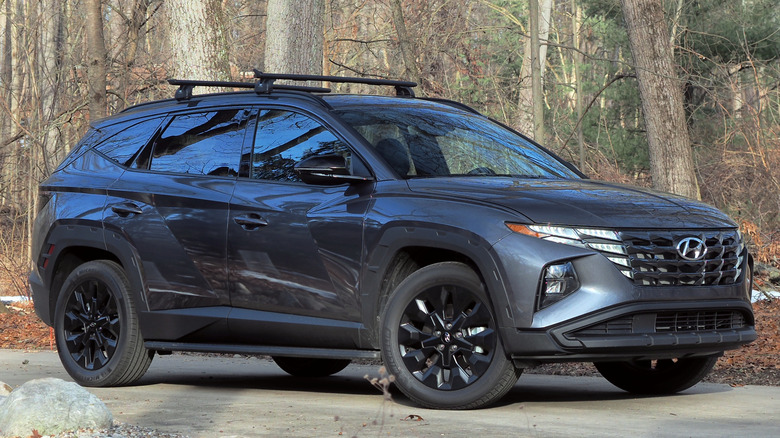2024 Hyundai Tucson Review: A Compact SUV That Scores On More Than Just Value
- Aggressive pricing
- Handsome styling
- Well-equipped (just skip the base SE trim)
- Spacious cabin
- Hardly thrilling to drive
- Frustrating dashboard controls
The 2024 Tucson may be one of Hyundai's smaller SUVs, but it has an unexpectedly broad range of powertrain options. At the cheapest end, things kick off at $27,500 (plus $1,335 destination) for front-wheel drive and a 2.5-liter non-turbocharged four-cylinder gas engine. Spending $32,325 (plus destination) gets you the Tucson Hybrid, with more power, all-wheel drive as standard, and an electrified engine that nudges up the fuel economy.
Finally, there's the 2024 Tucson Plug-In Hybrid, from $38,475 (plus destination). As the name suggests, that can be externally charged to top up its battery: at 33 miles, its electric-only range falls well short of, say, a Hyundai Ioniq 6, but you do get the convenience of stopping off at a gas pump to get you back on the road faster.
In that mix, this 2024 Tucson XRT AWD lands at $35,575 (plus destination). Not the most expensive non-electrified Tucson and you're spending $1,500 to add Hyundai's HTRAC AWD system since the XRT is FWD as standard — an odd choice, given the automaker's positioning of it as the "rugged trim" — but even with fancier floor mats, this review model still lands at just over $37,000.
Distinctive among a crowd of crossovers
On the one hand, that's $10k more than a base Tucson SE, but it's still well short of the average selling price of a new car in the U.S. right now. Meanwhile, you do get a better, more rewarding experience in Hyundai's more upscale trim. No, the XRT may not be at Tucson Limited levels of luxe, but fancier 19-inch wheels (versus the SE's 17-inchers), LED taillights, heated side mirrors, rear privacy glass, roof rails, and a power hands-free liftgate all standard on the outside are more than just nice to have.
Hyundai's angles-and-curves design language looks good here, with the sharply creased sheet metal helping distinguish the Tucson amid the crowd of crossover options. At the front, the way the LED headlights integrate into the grille mesh remains a nice touch, and the extra black cladding on the XRT trim — along with black-painted alloy wheels — gives it a burly twist. Don't expect it to stand out in the parking lot, mind: of the five-strong array of paint options, only a muted blue offers any respite from black, white, silver, or gray.
At least Hyundai loads up on active safety tech as standard. Blind spot warnings with collision avoidance assistance; forward collision-avoidance assist with pedestrian, cyclist, and junction turning detection; lane keeping and lane following assist; driver attention warnings; rear cross-traffic collision avoidance assist; and safe exit warnings are all standard across the Tucson board.
A well-equipped cabin with annoying controls
It's inside where the Tucson XRT starts to show its worth above the lower trims. Gone are the cloth seats with manual driver adjustment; the XRT gets H-Tex faux-leather and 8-way power adjustment, plus front seat heating (though you'll need the Limited trim for ventilation, passenger-side power adjustment, and rear seat heating). XRT also gets a leather-wrapped steering wheel and shift knob, 64-color ambient lighting, and an auto-dimming rear mirror.
Tech also gets a boost in the XRT. Gone is the SE's 8-inch touchscreen, the only real advantage to which is wireless Apple CarPlay and Android Auto support. In its place is a 10.25-inch touchscreen with navigation, dynamic voice recognition, and SiriusXM, paired with a 10.25-inch digital instrument cluster, wireless phone charging, and Hyundai's Bluelink+ connected car services. Weirdly, you'll have to plug your iPhone or Android smartphone in for projection, but Hyundai does add a second pair of USB charging ports in the rear of the Tucson to assuage the annoyance.
That's not to say you'll be entirely happy, necessarily. The Tucson's slab-like center console apparently took the monolith from "2001: A Space Odyssey" as inspiration, and while the obelisk may not have had touch-sensitive buttons for HVAC and media control, the sense of mystery as you jab a finger at its closely-spaced, texture-free keys is fit for Kubrick's camera. Other Hyundai models get actual, physical buttons, and they're so much easier to use without dragging your attention from the road.
Fine to drive, but not exciting
With its 2.5-liter inline-four gas engine offering 187 horsepower and 178 lb-ft of torque, routed through a standard 8-speed automatic transmission, nobody is going to confuse the Tucson for a performance car. Indeed, efficiency isn't the only reason to consider Hyundai's electrified versions of the SUV. The Tucson Hybrid brings 226 horsepower to the party, while the PHEV kicks that up to 261 horses.
The regular Tucson's power is fine. Not ample, not exciting, but perfectly adequate for everyday driving. Hyundai's gearing decisions help, lending a little more urgency when you're pulling away from a stop sign or lights, but the automaker neither bills its compact SUV as a sporty option nor gives it the drivetrain to make it that.
Shifting to Sport mode sees the transmission — a traditional shifter in most trims, replaced by buttons on the Tucson Limited — hold lower gears longer, but that mainly cranks up the noise rather than the pace. Probably more useful are the downhill brake control and the ability to lock the AWD system, not to mention the 2,000 pounds of towing capacity, and the fact that the Tucson XRT comes with a trailer hitch as standard.
For gas-sipping, you want the hybrid
There's no difference in tow rating between the front-wheel drive and all-wheel drive versions of the Tucson, but you do take a hit in economy. Where the Tucson FWD is EPA-rated for 25 mpg in the city, 32 mpg on the highway, and 28 mpg combined, switching to the AWD model sees those numbers dip to 23 mpg city, 29 mpg highway, and 25 mpg combined. In my own, mixed driving — in midwest winter conditions — I saw around 22 mpg.
That's a fair degree behind the Tucson Hybrid, which is rated for up to 38 mpg on the combined cycle, trim-depending. The hybrid version keeps the same tow rating, too, and — unlike with the plug-in hybrid, which has to accommodate its larger battery — there's no impact on trunk space. That means 41.2 cu-ft with the rear bench up, or 80.3 cu-ft with it folded down.
Sadly, Hyundai's Highway Driving Assist (HDA) not only isn't standard on the XRT trim but is unavailable completely. It's only offered on the top Limited trim, as is navigation-based smart cruise control, which builds on the standard adaptive cruise control by taking into account upcoming turns in the road to preemptively adjust speed.
2024 Hyundai Tucson Verdict
To say the compact SUV segment is overspilling with excellent choices is to flirt with understatement. With broad choice comes a question of priorities: is the allure of a sportier driving experience from behind the wheel pulling you toward Mazda's CX-50, or does the more off-road-ready Ford Bronco Sport tug at your retro heart-strings? Volkswagen's Tiguan isn't exactly exciting, but it's solid and dependable.
The Tucson's strongest attributes are its value, healthy equipment levels (bar the base SE trim), and style. Skipping the XRT and going for the cheaper Tucson SEL — with the $2,500 Convenience package filling in most of the equipment gaps from doing so — lands you at around $35k (plus destination) with all-wheel drive. That's a mighty aggressive prospect.
Those with running costs in mind will probably want to look to the even more compelling Tucson Hybrid, which brings some of the benefits of electrification without demanding behavior changes. It's also a little more engaging to drive, which is something few are likely to say about the regular 2024 Tucson. Then again, with solid equipment and value, complaining about absent verve might be missing the point.
